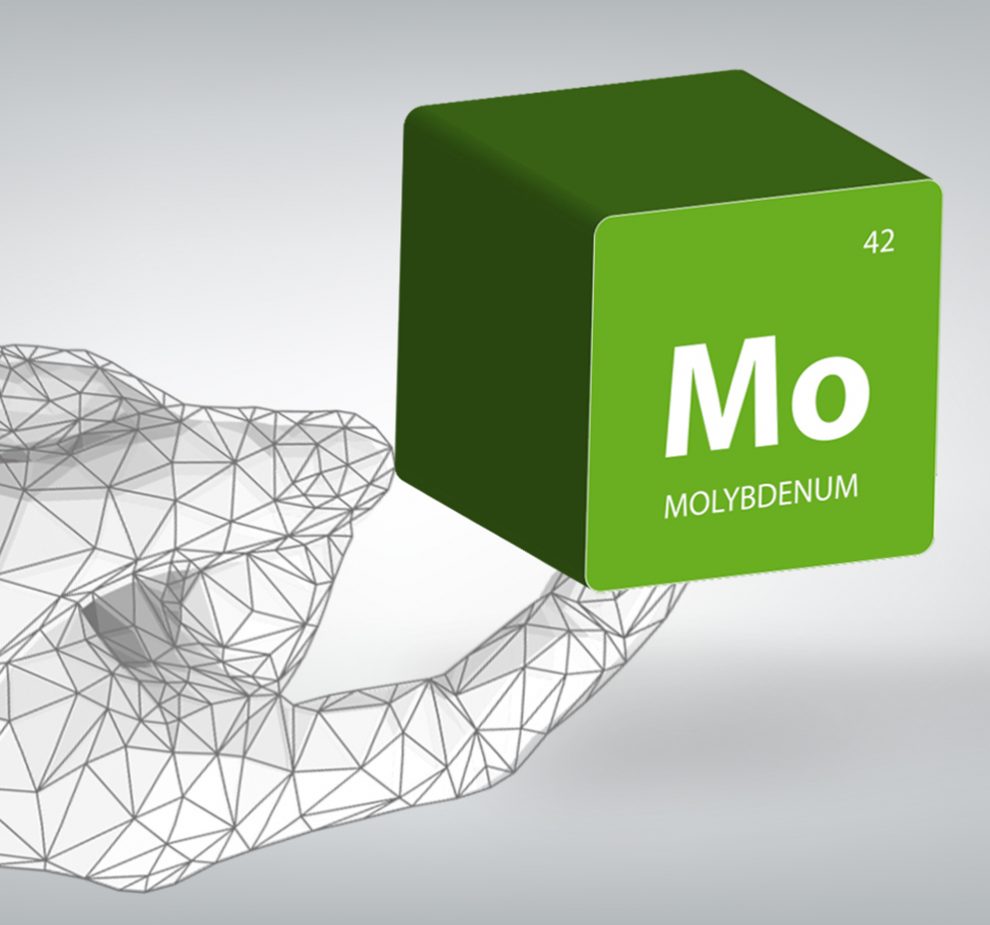
Related Datasheets

Related Brochures
Request a Quote
Please fill in the boxes on the contact form and a member of the team will contact you directly for a quotation.



Molybdenum (Mo) is the first choice for managing challenging thermal applications because of high thermal conductivity, low thermal expansion and mechanical strengths at elevated temperatures applied in vacuum/inert furnaces, as well as heat sinks for electronic chips. Additionally, molybdenum’s good electrical properties have resulted in application in microelectronics as thin film transistor in flat panel displays and electrode for photovoltaic. The largest worldwide application of molybdenum is as an alloying element for Tool Steels and High Strength Low Alloy steels, along with Stainless Steels for increasing anti-corrosive properties.
Elmet Technologies (formerly H.C. Starck Solutions) is a pioneer in technical engineering materials, with significant experience in the application of appropriate metals for new, innovative markets and challenging applications.
Molybdenum is a lustrous, silvery metal with a melting point of 2620°C (4748°F) and a boiling point of 5560°C (10,040°F). Molybdenum has high strength and stiffness and resists softening at increasing temperature, thus making molybdenum one of the highest performing metals in refractory conditions. These peak properties are enhanced by excellent thermal conductivity and a low degree of thermal expansion.
Molybdenum is a versatile material that is routinely utilized in a wide number of markets. This dynamic range of performance is assisted by the material’s workability. Components manufactured from pure molybdenum and its alloys can be engineered via a range of techniques, including:
These techniques are broadly utilized to manufacture plates & tubes to produce ultrathin molybdenum coatings, heat sinks, crucibles, furnace linings, and refractory electrodes. Elmet Technologies (formerly H.C. Starck Solutions) produces molybdenum metal powders and semi-finished products of the highest quality. If you would like to learn more, contact the team today.
Molybdenum is the most commonly used of the refractory metals, a class of elements known for their exceptional mechanical strength and very high melting points. Pure molybdenum is a dense silver-white metal with a melting point of 2622 C.1 As well as a high melting point, molybdenum boasts a number of other desirable properties including corrosion resistance, high electrical conductivity, high thermal conductivity and a useful linear expansion coefficient over a wide temperature range.
Molybdenum and its alloys are highly versatile and can be processed via a range of techniques, including additive manufacturing, powder metallurgy, arc melting, electron beam melting, extrusion, forging and hot and cold rolling.
This makes it a desirable engineering material. Molybdenum can be used in its pure form, and is also commonly combined with other materials such as copper and titanium to form a range of high-performance materials.
In the 1950s, researchers discovered that molten glass conducts electricity. This led to the development of electric furnaces, where heat could be supplied to molten glass by passing an electric current through it via electrodes submerged in the melt.2
Glass melting electrodes are exposed to extremely high temperatures and aggressive chemical conditions. Subsequently, molybdenum was ideal for early electric furnaces, exhibiting the required combination of heat resistance, corrosion resistance and high electrical conductivity (2×107 S/m). Other materials such as platinum, tin oxide, carbon and nickel alloys like Inconel have since found limited use in glass melting electrodes, however these materials suffer from fragility and low strength at the required temperatures.
Molybdenum remains the material of choice for electric-boost, gas-fired furnaces today, occasionally alloyed with a small amount of zirconium to improve corrosion resistance. Advanced coatings can even enable molybdenum-based materials to be brought up to temperature in air without oxidation.
Molybdenum’s extreme heat resistance also earns its use as refractory components in furnaces and vessels for heat treatment and materials processing. Throughout manufacturing industries, molybdenum and molybdenum-based alloys are used to produce durable heating elements, crucibles, hot zones, and furnace racks capable of resisting extreme temperatures. Molybdenum-lanthana (MoLa) alloys are one type of oxide-dispersion strengthened (ODS) alloys, which demonstrate improved resistance against high-temperature creep deformation. Molybdenum-lanthana is an ideal material for applications requiring dimensional stability and strength at temperatures above the capabilities of either pure molybdenum or molybdenum TZM alloy.
Forging typically involves the use of compressive force to shape heated metal using dies. These precision-machined components must therefore be capable of withstanding intense heat and enormous compressive forces simultaneously. The ability to withstand high mechanical loads at high temperatures is known as “hot strength” – something that molybdenum is renowned for.
Isothermal forging dies made from molybdenum-based alloys like TZM or molybdenum-hafnium-carbide (MHC) offer high temperature strength, creep resistance, high recrystallization temperatures resulting in accurate and efficient die forging. Molybdenum’s compatibility with a range of manufacturing techniques ensures that molybdenum forging dies can be produced with high levels of precision to suit a range of die forging applications.
Sputtering of molybdenum – in which a molybdenum sputtering ‘target’ is bombarded with ions to eject atoms from its surface – enables the creation of thin molybdenum coatings, which have numerous applications in the electronics industry. Ultra-high-definition flat panel displays are one of the many products enabled by molybdenum sputtering.3 This application uses molybdenum’s high specific impedance and membrane stress to improve the brightness, color and contrast of LCD screens.
Molybdenum finds extensive use in medical equipment as components in high-energy X-ray tubes used for CT scanners. X-ray tubes are a highly evolved technology, and high-power densities push materials to their limits. Pressed, sintered and forged molybdenum and molybdenum-titanium-zirconium alloy (TZM) are used to construct durable anode components for rotating X-ray tubes, forming an integral part of the X-ray-emitting assembly.4
Elmet Technologies (formerly H.C. Starck Solutions) is one of the biggest global providers of high-purity molybdenum powders, semi-finished products, and complex fabrications. Our molybdenum products are available in the following materials:
Powder metallurgy (PM) encompasses a range of modern engineering techniques, ranging from isostatic pressing to plasma spray coating. Elmet Technologies (formerly H.C. Starck Solutions) is a world-leading provider of high-performance molybdenum and molybdenum alloy powders for PM applications.
Elmet Technologies (formerly H.C. Starck Solutions) produces molybdenum and molybdenum alloy powders with tightly controlled particle size distributions, with a target mean particle size between 3- 30 m. Morphological properties can also be finely tuned to suit customer specifications.
Elmet Technologies (formerly H.C. Starck Solutions) provides molybdenum products in a range of semi-finished shapes, including the following:
Elmet Technologies (formerly H.C. Starck Solutions) offers a comprehensive portfolio of powder processing and manufacturing services, providing high-quality finished products from a range of molybdenum-based materials. These techniques include:


Please fill in the boxes on the contact form and a member of the team will contact you directly for a quotation.